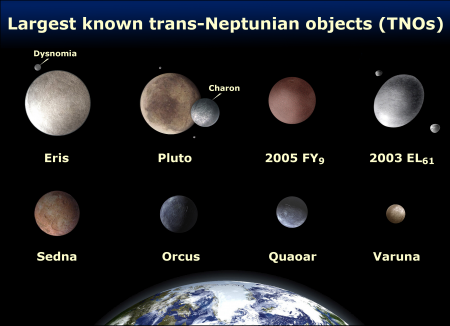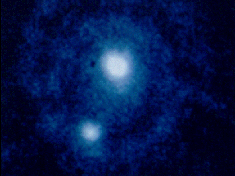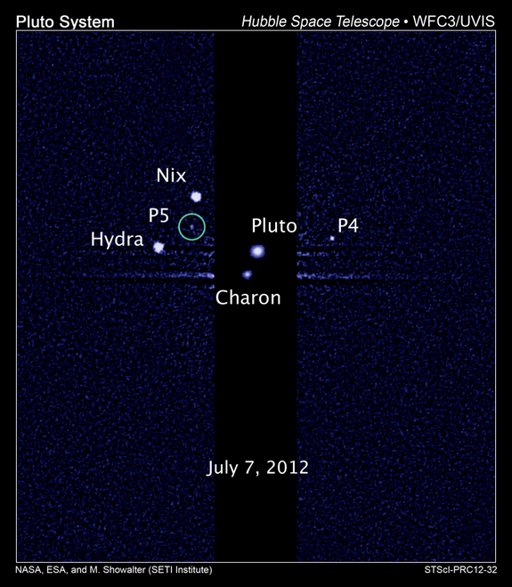First a little history of the “Planet” Pluto:
From Universe Today:
Pluto was first discovered in 1930 by Clyde W. Tombaugh at the Lowell Observatory in Flagstaff Arizona. Astronomers had long predicted that there would be a ninth planet in the Solar System, which they called Planet X. Only 22 at the time, Tombaugh was given the laborious task of comparing photographic plates. These were two images of a region of the sky, taken two weeks apart. Any moving object, like an asteroid, comet or planet, would appear to jump from one photograph to the next.
After a year of observations, Tombaugh finally discovered an object in the right orbit, and declared that he had discovered Planet X. Because they had discovered it, the Lowell team were allowed to name it. They settled on Pluto, a name suggested by an 11-year old school girl in Oxford, England (no, it wasn’t named after the Disney character, but the Roman god of the underworld).
The Solar System now had 9 planets.
It was not until 48 years later that it was discovered that tiny Pluto actually had its own moon
Astronomers weren’t sure about Pluto’s mass until the discovery of its largest Moon, Charon, in 1978. And by knowing its mass (0.0021 Earths), they could more accurately gauge its size. The most accurate measurement currently gives the size of Pluto at 2,400 km (1,500 miles) across. Although this is small, Mercury is only 4,880 km (3,032 miles) across. Pluto is tiny, but it was considered larger than anything else past the orbit of Neptune.
With the increased power of the Hubble Space Telescope, two more moons were imaged orbiting Pluto in 2005, subsequently named Hydra and Nix.
HOWEVER
The Hubble has been a mixed blessing for little Pluto because it has also revealed a host of objects in the same size range as our little outlying cousin, including one which is larger. These are known as Trans Neptunian Objects.

It was the discovery of Eris, out in the Kuiper belt which precipitated the debate on whether or not we should consider Pluto as planet, and in 2006 at a symposium in Prague it was decided that among the aspects that define a planet should be the size and gravity to clear that object’s orbit of debris to a certain distance. Pluto is close, but neither it nor Eris have done this so Pluto was downgraded.
Pluto may not be scientifically considered a planet any longer, and it may not be clearing its orbit of debris, but it is certainly amassing quite a bit in orbit around itself.
From Yahoo News
Astronomers are asking for help in naming two newly discovered moons of Pluto, which currently go by the uninspired monikers P4 and P5. The tiny satellites were spotted by the Hubble Space Telescope in 2011 and 2012, respectively.
Pluto’s three other known moons — Charon, Nix and Hydra — are named for Greek mythological characters associated with the underworld. The short list of names that interested members of the public can vote on for the new moons follow that same pattern, researchers said.
So if you would like to cast your vote
You can vote to name the moons on plutorocks.com until noon EST (1700 GMT) on Feb. 25. Write-in ballots are also encouraged.
Or if you have trouble with the link, send your ideas to me and I will pass them on
I suggest Ghost and Theory.
2 comments





